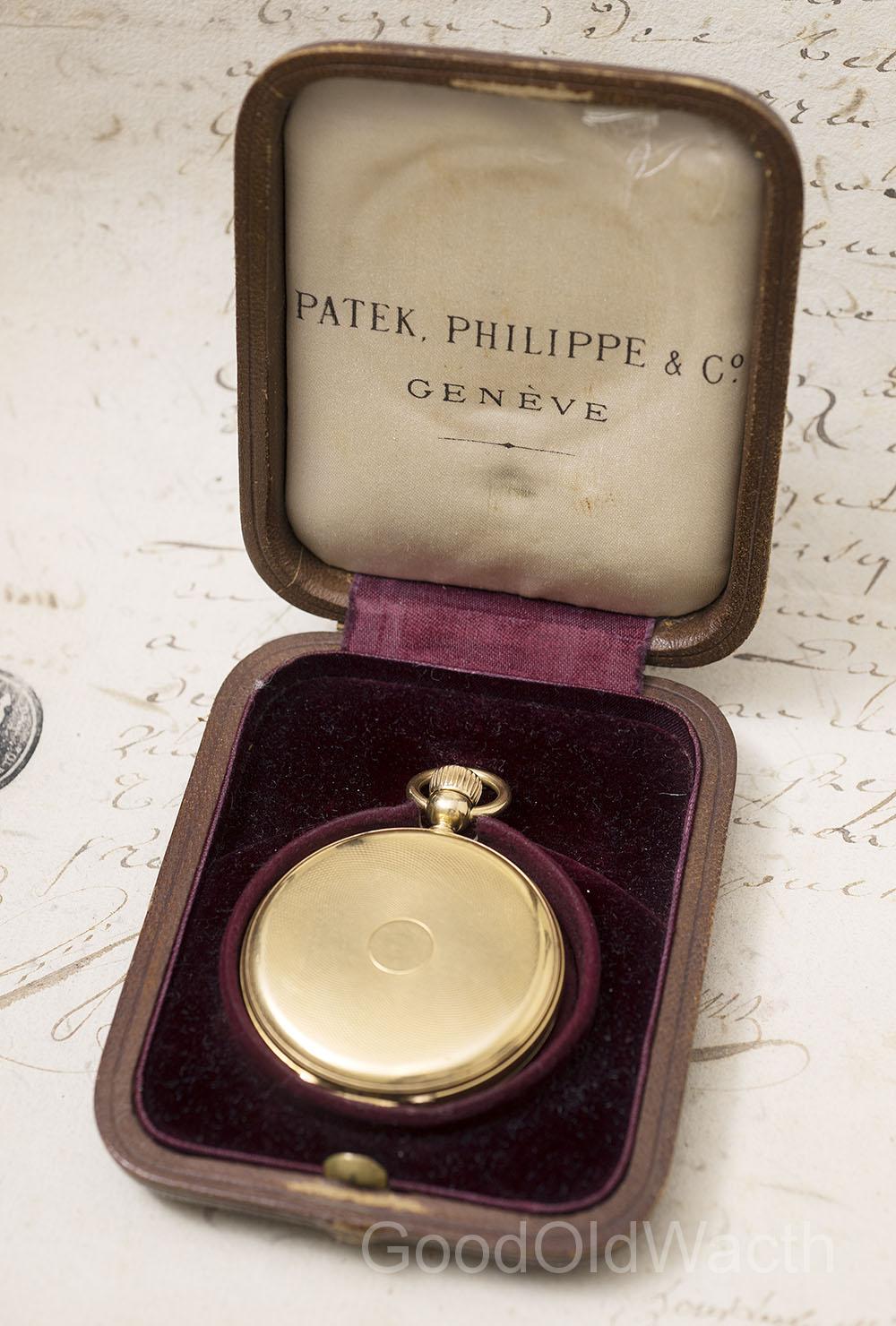 |
Good Old Watch
|
/ Whatsapp: |
Early keyless pocket watch by Patek Philippe.
The low serial number 13161 date watch to 1860 approximately.
Huber in his book "Patek Philippe" shows Patek Philippe watch with very similar movement and serial number 13083, that was sold in April of 1860 (N28, p 112).
This movement is an improved variant of original invention by Jean Adrien Philippe. This type of movement obtained French patent in 1860.
However this movement still doesn't allowed to rotate the crown backward while winding the watch. Seems, the watch of this type wasn't produced a long time, most probably just few years.
The dust cover of the watch feature inscription "Invention & Execution by Patek Philippe Geneve", underlining the fact of invention and in-house development.
Condition
The watch appears to be in good condition.
Case has minor period wear.
Movement features cylinder escapement, winding train with wolf-tooth gears.
It's in running condition, though I don't guarantee time keeping.
Dial seems to be in good condition, without noticeable flows, just tiny wear near fixing screws.
Mineral glass, Breguet hands.
Watch comes with genuine Patek Philippe case.
The serial number of the case doesn't matches to the watch, it's probably later, but at least it's genuine Patek Philippe period watch case.
Diameter is 46mm, height without bow is 58mm, weight is 81.5 grams.
Keyless time setting invented by Jean Adrien Philippe
By the late 1830s, stem-wound movements were being made in Switzerland, and Patek, Czapek & Cie had been using some unfinished movements from supplier Louis Audemars, which were wound and set by means of a crown. However, these were bulky and inelegant pieces of machinery, unsuited to the manufacture of the highly desirable slim watches that men of fashion carried and which Patek would have to make if he were to break out of his circle of Polish clients and compete in the international markets.
Philippe was aware of developments in the sphere of keyless winding and was familiar with their shortcomings. He intended to overcome them with an elegant and compact system that allowed both winding and setting to be completed with the same crown, which, when pulled out, disengaged from the transmission wheel and engaged with the motion work, enabling the hands to be set. He had completed his work in time for the exhibition of 1844 and was rewarded with a bronze medal for his invention. Although this novel and ingenious system appealed to the awards panel of the exhibition, the invention was not adopted by any of the major French marques. Patek, however, the little-known Polish newcomer from Geneva, recognized the potential of this invention almost immediately.
The low serial number 13161 date watch to 1860 approximately.
Huber in his book "Patek Philippe" shows Patek Philippe watch with very similar movement and serial number 13083, that was sold in April of 1860 (N28, p 112).
This movement is an improved variant of original invention by Jean Adrien Philippe. This type of movement obtained French patent in 1860.
However this movement still doesn't allowed to rotate the crown backward while winding the watch. Seems, the watch of this type wasn't produced a long time, most probably just few years.
The dust cover of the watch feature inscription "Invention & Execution by Patek Philippe Geneve", underlining the fact of invention and in-house development.
Condition
The watch appears to be in good condition.
Case has minor period wear.
Movement features cylinder escapement, winding train with wolf-tooth gears.
It's in running condition, though I don't guarantee time keeping.
Dial seems to be in good condition, without noticeable flows, just tiny wear near fixing screws.
Mineral glass, Breguet hands.
Watch comes with genuine Patek Philippe case.
The serial number of the case doesn't matches to the watch, it's probably later, but at least it's genuine Patek Philippe period watch case.
Diameter is 46mm, height without bow is 58mm, weight is 81.5 grams.
Keyless time setting invented by Jean Adrien Philippe
By the late 1830s, stem-wound movements were being made in Switzerland, and Patek, Czapek & Cie had been using some unfinished movements from supplier Louis Audemars, which were wound and set by means of a crown. However, these were bulky and inelegant pieces of machinery, unsuited to the manufacture of the highly desirable slim watches that men of fashion carried and which Patek would have to make if he were to break out of his circle of Polish clients and compete in the international markets.
Philippe was aware of developments in the sphere of keyless winding and was familiar with their shortcomings. He intended to overcome them with an elegant and compact system that allowed both winding and setting to be completed with the same crown, which, when pulled out, disengaged from the transmission wheel and engaged with the motion work, enabling the hands to be set. He had completed his work in time for the exhibition of 1844 and was rewarded with a bronze medal for his invention. Although this novel and ingenious system appealed to the awards panel of the exhibition, the invention was not adopted by any of the major French marques. Patek, however, the little-known Polish newcomer from Geneva, recognized the potential of this invention almost immediately.
Item is not available






